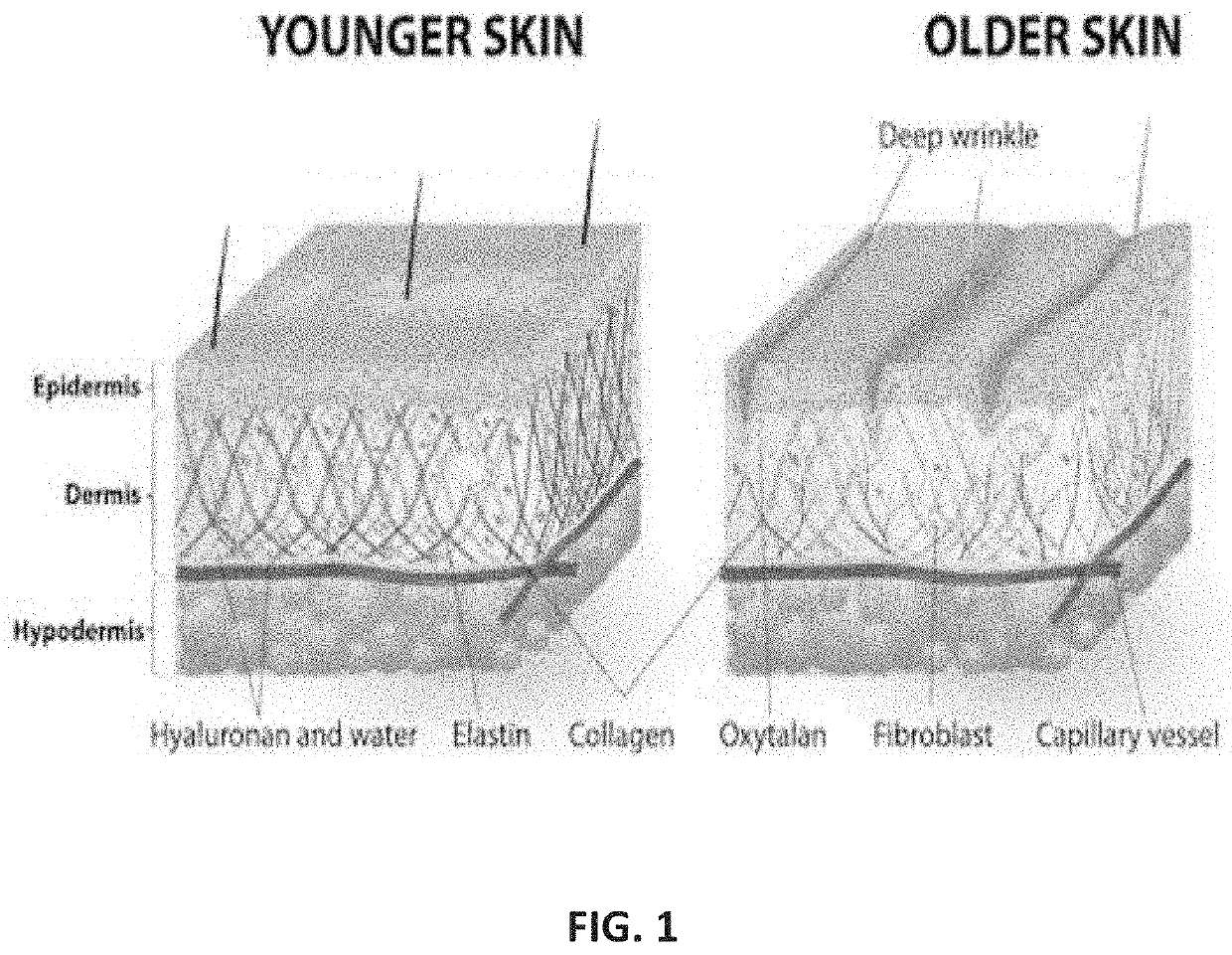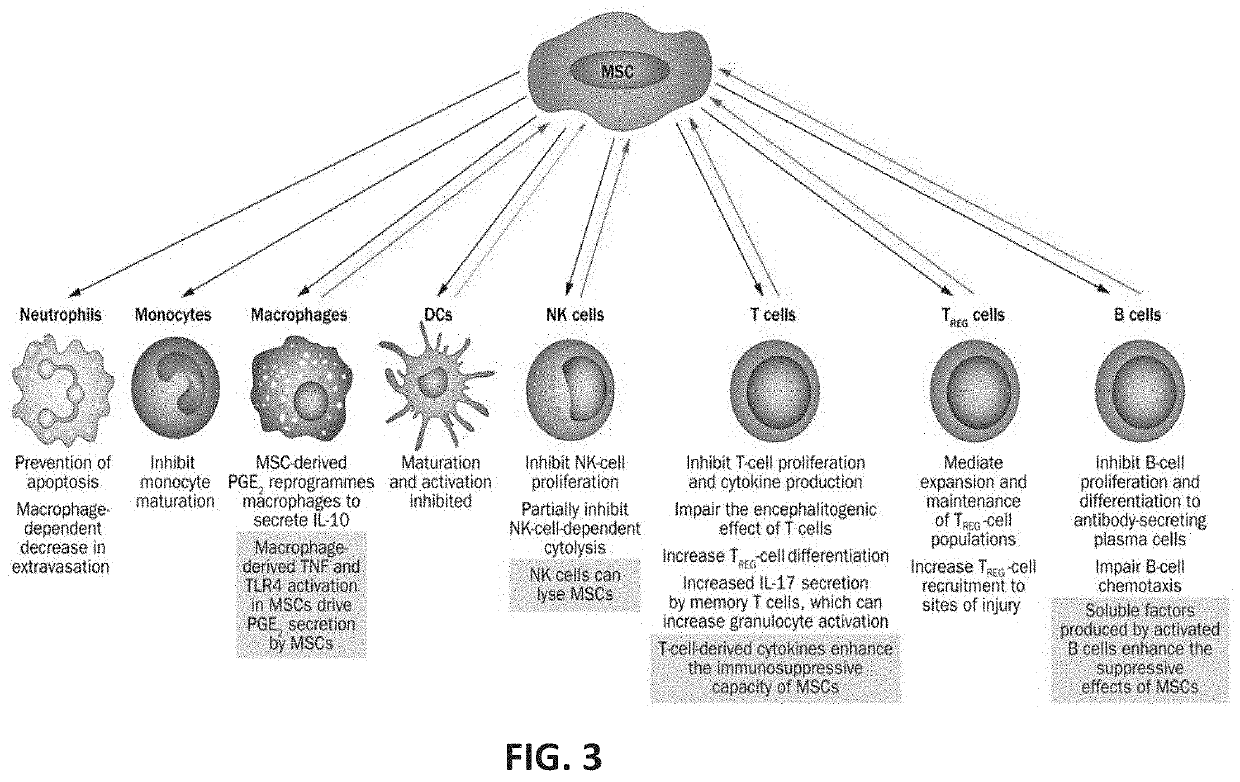Method of skin rejuvenation using stem cell engraftment
a stem cell and skin rejuvenation technology, applied in the field of skin rejuvenation using stem cell engraftment, can solve problems such as the proliferation of fibroblasts
- Summary
- Abstract
- Description
- Claims
- Application Information
AI Technical Summary
Benefits of technology
Problems solved by technology
Method used
Image
Examples
example 1
[0092]The patient is prepped for the procedure by placing a headband along the hairline to hold back the patient's hair from the face followed by a cap over the hair. A topical anesthetic, such as a numbing cream, is applied in a thick, even layer to the treatment area with the cream being massaged into the skin. The topical anesthetic is allowed to penetrate into the skin for between about 50-60 minutes without disturbing the treatment area. It is critical that the patient not disturb the treatment area. Once the topical anesthetic has penetrated the skin, excess cream can be removed by wiping with a water-moistened pad.
[0093]The skin of the treatment area is then cleansed with a gentle cleanser, once by hand and the second time with an ultrasonic facial brush to ensure removal of all topical anesthetic from the treatment area and then patted dry with a clean cloth. The entire treatment area is then cleaned thoroughly, first with warm water and second with alcohol wipes and then al...
example 2
[0106]Wrinkles form from the relaxation of the skin caused by receding papillae and degeneration of collagen and elastin fibers in the dermis and at the dermal-epidermal junction. Wrinkles can be assessed by various methods to determine the efficacy of a treatment. Two such methods are (1) Fitzpatrick Wrinkle Assessment Scale and (2) Lemperle Wrinkle Assessment scale. The Fitzpatrick Wrinkle Assessment scale classifies periorbital and perioral wrinkling and is directed towards generalized wrinkling and elastosis and has been used to determine the results from laser resurfacing. The Lemperle Wrinkle Assessment Scale classifies facial wrinkle depth and has been used in determining results from injectables. The Lemperle scale assesses deeper mimetic wrinkles to differentiate these deeper wrinkles, furrows, and creases from generalized elastosis or folds. (Lemperle, G. et al., A classification of facial wrinkles, Plastic and Reconstructive Surgery, November 2001, 108(6):1735-1750)
[0107]...
example 3
[0119]Hyperpigmentation can be measured by the Taylor Hyperpigmentation Scale which is a visual scale for the evaluation of all skin types consisting of a set of 15 uniquely colored skin hue cards spanning the full range of skin hues, each with 10 bands of increasingly darker graduations of skin hues that represent progressive levels of hyperpigmentation. The range of choices in the scale focuses on common skin hues and levels of hyperpigmentation. In use, the subject's skin color is matched to 1 of the 15 laminated skin hue cards in the scale. Once the appropriate skin hue is identified, the hyperpigmentation value (scaled 1-10) that best matches the affected area of hyperpigmentation is selected from the 10 gradations on the corresponding skin hue card. The values for skin hue and hyperpigmentation are then recorded and may be monitored to evaluate the progression of the pigmentation or the effectiveness of therapy. (Taylor, S. C. et al., The Taylor Hyperpigmentation Scale: a new ...
PUM
| Property | Measurement | Unit |
|---|---|---|
| depth | aaaaa | aaaaa |
| time | aaaaa | aaaaa |
| time | aaaaa | aaaaa |
Abstract
Description
Claims
Application Information
 Login to View More
Login to View More - R&D
- Intellectual Property
- Life Sciences
- Materials
- Tech Scout
- Unparalleled Data Quality
- Higher Quality Content
- 60% Fewer Hallucinations
Browse by: Latest US Patents, China's latest patents, Technical Efficacy Thesaurus, Application Domain, Technology Topic, Popular Technical Reports.
© 2025 PatSnap. All rights reserved.Legal|Privacy policy|Modern Slavery Act Transparency Statement|Sitemap|About US| Contact US: help@patsnap.com



